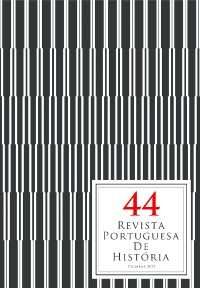Please use this identifier to cite or link to this item:
https://hdl.handle.net/10316.2/33424| Title: | Em torno da sociologia das ordens militares na Idade Média | Authors: | Oliveira, Luís Filipe | Keywords: | Military orders;Nobility;Urban elites;Knighthood;Ordens militares;Nobreza;Élites urbanas;Cavalaria | Issue Date: | 2013 | Publisher: | Faculdade de Letras da Universidade de Coimbra, Instituto de História Económica e Social | Abstract: | Com base nos estudos prosopográficos
dos últimos anos, ensaia-se neste trabalho
uma caracterização da sociologia das ordens
militares, que contraria a perspectiva tradicional
ao sublinhar a escassez relativa de freires
oriundos das famílias nobres e o predomínio
daqueles que eram recrutados nos meios
urbanos. Revalorizou-se, por isso, a dimensão
urbana das ordens militares e insistiu-se na
necessidade de estudar o modo como os freires
se inseriam nos espaços urbanos, quer nas
cidades onde tinham as suas casas de comenda
e os seus conventos, quer nas vilas que eles
haviam fundado, ou que estavam sob a sua
jurisdição. O desinteresse da nobreza pelas
ordens militares levou, por outro lado, a que
se olhasse para a natureza e a dimensão da
clivagem que as separava e se analisassem os
processos através dos quais o modo de vida dos
monges-guerreiros se aproximou dos valores
e dos costumes da aristocracia fidalga. Sem
que seja o único factor a ter em conta, pois
há que considerar os processos de nobilitação
das famílias associadas às ordens, são essas
trocas culturais entre a cavalaria leiga e a cavalaria
religiosa que podem ajudar a explicar a
aristocratização das milícias que se observa
durante o século XV. Based upon prosopographical data available only on the last years, this work aims to characterize the sociology of the military orders, by emphasizing the relative scarcity of brethren from noble families and the prevalence of those who were recruited among urban groups. This led the author to reassess the urban dimension of military orders and to insist on the need to better study the friars presence in the urban areas where they had their convents and their commanderies, or even their relationship with the small cities which they had found and were under their jurisdiction. On the other hand, by stressing the cultural gap that existed until the mid 14th century between the noble families and the military orders, he calls upon the need to analyze the processes through which the brethren’s way of life got closer to the values and customs of the aristocracy. Even though this is not the only factor to be taken in account, as one should also consider the gentrification process of several families associated with the military orders, the cultural exchanges between lay knights and religious knights may help explain why brethren of noble origin became prevalent during the fifteenth century. |
URI: | https://hdl.handle.net/10316.2/33424 | ISSN: | 0870-4147 | DOI: | 10.14195/0870-4147_44_3 |
| Appears in Collections: | Revista Portuguesa de História |
Files in This Item:
| File | Description | Size | Format | |
|---|---|---|---|---|
| rph44_artigo5.pdf | 396.25 kB | Adobe PDF |  |
Items in DSpace are protected by copyright, with all rights reserved, unless otherwise indicated.
